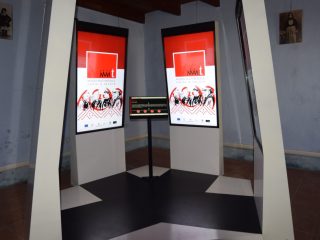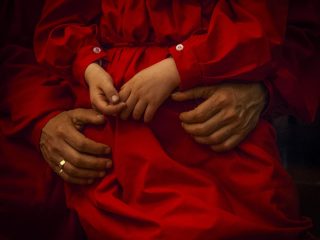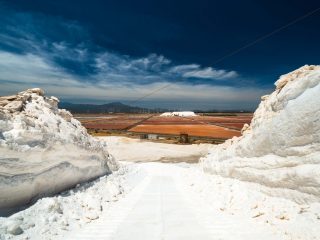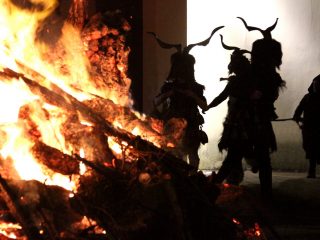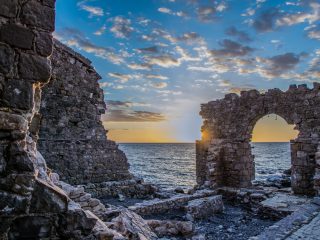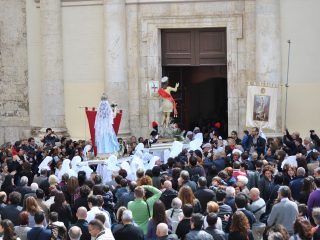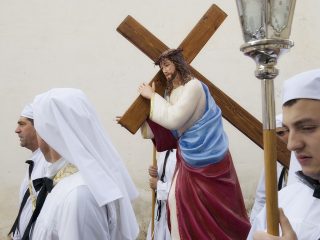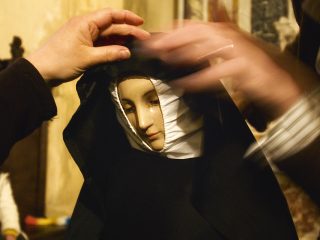Orani is a small village in the centre of Barbagia, a place steeped in ancient traditions handed down through the centuries. The town’s symbol is the “Su Bundu” mask, which dominates the carnival in Orani.
Carnival celebrations start on 16 January with the bonfire of Sant’Antonio and the first outing of the masks amidst dances and wailing. The real festival, however, is held on Sunday, Monday and Tuesday of the carnival.
The mask portrays a creature that is half human, half cow. “Sos Bundos” wear the ancient clothing of the Barbaracia peasant tradition: black velvet trousers, white shirt, “su groppette” (a kind of waistcoat), leather shafts (sos gambales), and lastly “su saccu”. Su saccu is a rough woollen fabric cloak or coat (typical Sardinian artisan fabric in coarse wool), with a hood that covers the entire head. This woollen cloak protected peasants against storms, used as a cover in the event of having to take refuge for the night, or as a table cover when eating in the countryside.
The “Sos Bundos” mask has been entirely produced in red-painted cork; it is believed that in ancient times, the mask’s red colour was obtained from animal blood. The disguise is completed with long horns, a pronounced nose and double chin, painted white. A modern variant of the mask is produced entirely in natural, carved cork to highlight the face’s somatic features.
“Sos Bundos” carry “su moju” in their hands, a small cork container holding the grain ready to be planted. Indeed, during the carnival processions, “Sos Bundos” enact the moment of planting, gripping a wooden fork known as “su trivuthu”. This is crafted from the branch of a tree, usually oak, pear or olive.
“Sos Bundos” use “Su trivuthu” to strike or sting passers-by to invite them to take part in the propitiatory dance for an abundant harvest. According to popular tradition, on a stormy night, a peasant dressed as “Bundu” convinced the evil spirits to respect men and the harvests. The masks appear to stage a battle between good and evil. In the past, those who took part in the “Sos Bundos” procession, painted their face with burnt cork and rode on the back of a donkey or a horse.








